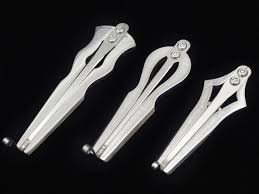Boy Playing A Jew's Harp
The Jew's harp is thought to be one of the oldest musical instruments in the world. The mouth harp, a Turkish musical instrument, is named and used in Turkish republics with names like iron kopuz”, awız kopuz”, mouth kopuz”, domboi”, awıa gubuz”, şankopız”. The mouth harp, which is common among the Turkish Tribes, is also used, due to its magical tone, in order to enter a hypnotic state easily by shamans, and used with tambourine by the poets to expel evil spirits and invoke good spirits in ceremonies such as entertainment, weddings, etc. The earliest archaeological examples are found in Mongolia and Bashkortostan, where shamanism dominates in this region. The instrument that takes its name from its sound "damm dammm", has been made of one-piece wood or bone in its first examples, however, it is now produced from various alloy metals since the 13th century. Its function is to produce a vibrating sound with tongue moves and breathing patterns.
The resonance chambers of mouth and chest of the player can amplifie a certain range of frequencies, irrespective of the fundamental note of the jew's harp. This range of tones that can be played is certainly different for each individual player. In her book on the jew's harp, Regina Plate states that the pitches that can be played range from 500 to 2000 Hz, corresponding to two octaves. In my experience tones with a frequency of up to about. 2300 Hz can be played. The notes of the first formant can be as deep as about 250 Hz. On the basis of the fundamental note, the tones that can be played on a certain jew's harp can be looked up in the overtone table (with explanations, pdf, 68 KB).
Make sure the no part of your hand or fingers are touching the thin piece of metal in the center, because it has to vibrate freely. h. The music of the Jew's harp is danced to in many cultures. Kyrgyz Republic students play an ooz komuz or jaw harp performance during a dedication ceremony at the Abdraev Music School in Bishkek, Kyrgyzstan, Oct. 1, 2012.
Marios Visvikis and Panos Tsigkos present a live set based on the album Music For Jaw Harp”. They use a combination of synthesizers and primitive acoustic instruments such as jaw harp, kalimba, overtone flute, gong and singing bowl. The product is a blend of minimalistic, electronic and ambient music.
Construction type. From practically used nowadays the most memorable are two types — bow-shaped (the most common) and lamellate. The fundamental difference between them is that they are being held differently. The bow-shaped Jew's Harps have to be held against the teeth; the lamellate held by the hand, and only slightly grasped with the lips for optimum volume. All other options can be called exotic. Since metal lamellate trumps are made only by one workshop at the moment, any generalizations are not to be made. Let's consider that these common features are the manufacturers' merits.
At the sound of a Mouth-harp have different mechanical characteristics influence, which I would like. We recognise that buying musical instruments online without being able to physically play and hear them has it's limitations, particularly with many of our unique instruments that you won't have experienced before.
which jaw harp to buy
jew's harp german
dan moi jew's harp
jew's harp meaning
